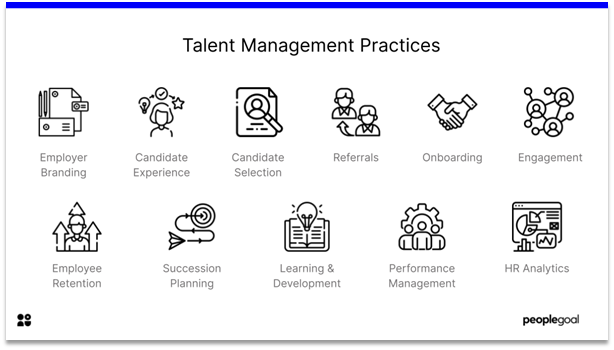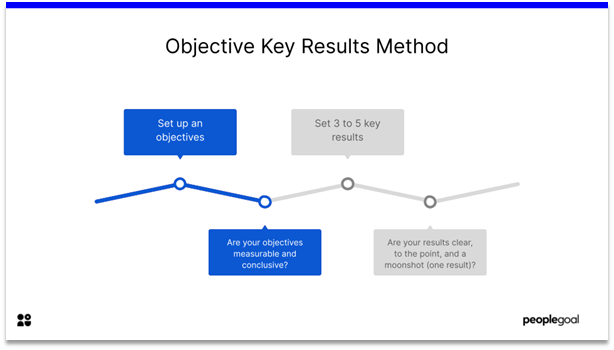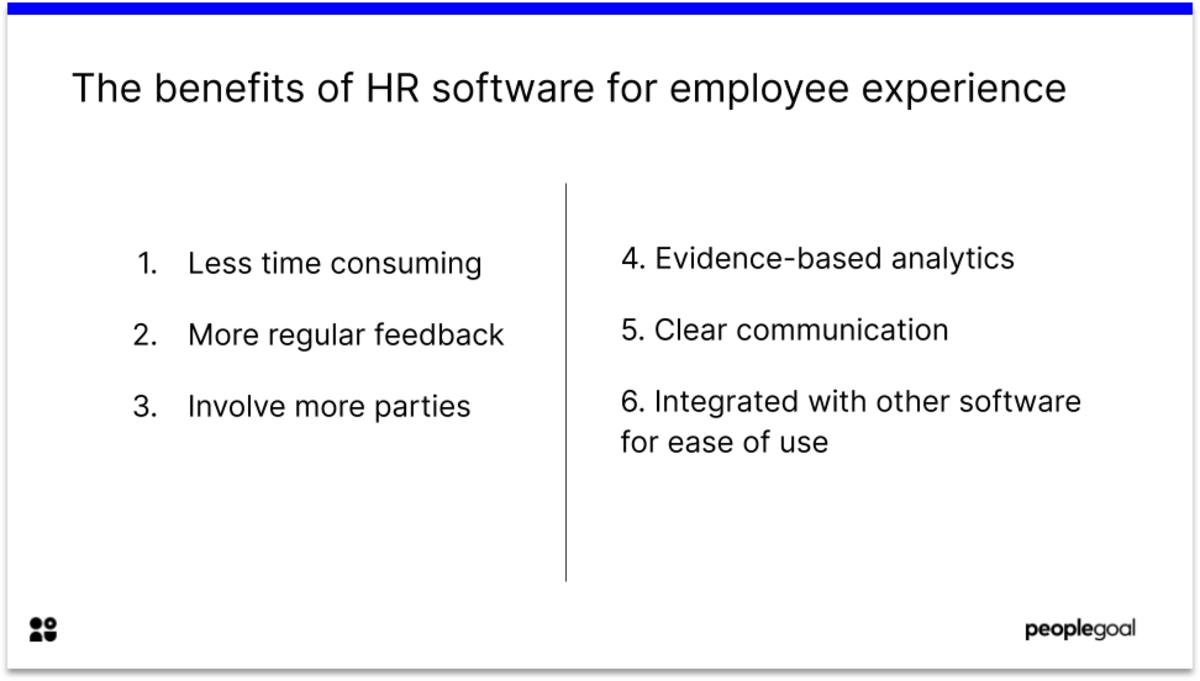Setting SMART goals is a necessity for both personal and professional development. The methodology allows us to break vague objectives into actionable actions to help you (or your direct report) achieve what you are striving for and improve across various areas.
The acronym SMART stands for specific, measurable, achievable, relevant and time-bound. Our essential guide to SMART goals explains in detail the importance of SMART goals, its benefits and provides useful examples for various positions and industries.
Yet, most of the people continue to set goals that are unclear and random. The main problem with such goals is that often we do not know why we actually want to achieve them.
Therefore, in this article we have decided to address “how to write smart goals” from a perspective of reasoning behind setting a SMART goal in a first place. Whether you are setting SMART goals for your personal development or professional ones that need to be aligned with wider organizational objectives it is essential to understand the problem you are aiming to solve. So, the right question might actually be; Why to set SMART goals?
5 Why’s Methodology
To write impactful SMART goals for yourself or for your team you can utilize the 5 why’s methodology. It was developed by Sakichi Toyoda in 1930s and continues to remain popular due to its practicality as it often guides you to a root of a problem.
Therefore, it comes as a no surprise that the method is commonly used as a problem-solving tool across different industries. The method allows to break the problem by simply asking “why” 5 times, to understand where the problem stems from. This analysis can be then used to effectively set your SMART goals and provide you with understanding of your motivation to achieve them.
Embedded content: https://www.youtube.com/watch?v=SrlYkx41wEE
How to use 5 whys for setting SMART goals
Individual Development Goals
Let’s take the common example of “getting fit”. What does getting fit even mean? If you set such a vague goal you will not get anywhere.
Instead ask yourself;
- Why do you want to get fit?
An answer to the question could be; Because I cannot walk up a hill without losing my breath?
- Why can’t you walk up the hill without losing your breath?
Possibly: I do not exercise and am out of condition.
- Why don’t you exercise?
Possibly: because I do not have time to go to gym?
- Why don’t you have time to exercise?
Possibly: Because I stay long at the office to finish my work?
- Why don’t you finish your work in time?
Possibly: Because I come late to the office.
And there you have it. Based on this analysis you can break your vague aspiration into a number of SMART goals.
The options are infinite. Below are some of the examples of SMART goals you might want to set up:
- Go to sleep before 11 pm on workdays and wake up 30 minutes earlier to come to office on time in the next few months.
- Come to the office early to leave at 5 pm to be able to go to a gym/class/go for a run for 30/45 minutes three times a week.
- Go to a gym/class/running 3 times a week over the next 3 months.
Organizational Goals
Similarly, same process can be applied to setting vague organizational goals such as “become more profitable", understanding the reasons behind the organizational objectives will help you to keep on track at the times of uncertainty and keep your team on the same page.
For example, an organizational objective for the year might be retain talented employees. Yet, if you do not know the cause why your best talent is leaving you will not be able to improve the rates.
Therefore, ask yourself;
- Why do we need to retain talented employees?
Possibly: because the employee churn rate has increased by 25% in the past year.
- Why did the churn rate increase?
Possibly: because the competitors steal your best talent.
- Why do your competitors steal your best talent?
Possibly: because you have disengaged employees.
- Why do you have disengaged employees?
Possibly: because you provide them with little or even no feedback and do not recognize their efforts.
- Why do you provide your employees with little or no feedback?
Possibly: because you have no performance management tool in place.

Once you have understood the driving power behind your goal. Use the SMART goals template to set specific actionable goals that will bring tangible results to your life.
Again, based on this analysis you can write actionable SMART goals for your business such as;
-
Conduct an employee engagement survey every 2 months to evaluate the engagement levels and possible engagement issues across your business in the next year.
-
Provide your employees with 360 ongoing feedback on a monthly basis in the next quarter.
-
Implement an effective performance management system in line with the issues and needs of your organization in the next 6 months.
It will further enable your workforce to set their own individual development goals based on their understanding of the company objectives and understanding of their competencies and responsibilities to contribute towards them.
If you need further inspiration for writing your goals check out our article on setting SMART goals for work or SMART goals for managers and leaders.
Ready to 3x Your Teams' Performance?
Use the best performance management software to align goals, track progress, and boost employee engagement.






